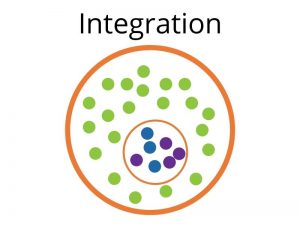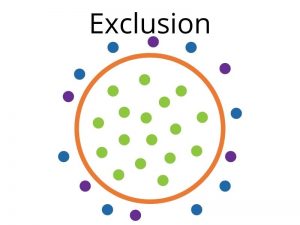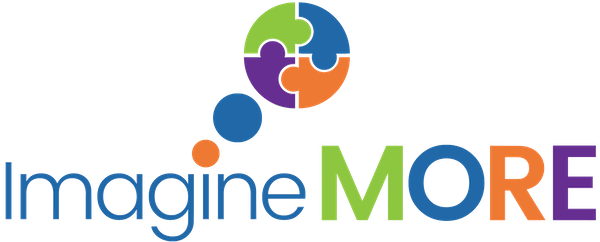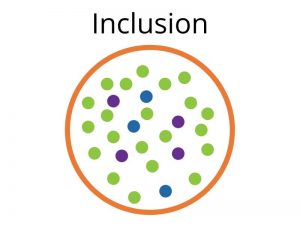Last week we recommended that families in the ACT participate in A Community Conversation, a conversation about inclusive education of students with disability in ACT Public Schools. The survey was created on behalf of the ACT Education Directorate, and is part of their Future of Education Strategy.
Through the Community Conversation, the Directorate wants to know what you think ACT Public Schools can strengthen and build on to be more inclusive for students with disability.
We think it’s critical to have inclusive education on the radar of ACT families. We’d love to see authentically inclusive schools throughout the ACT. We know many students are attending segregated settings as regular schools/classrooms are just not welcoming or inclusive. We want to improve this with your help.
Now that we’ve had time to review the survey, we have significant concerns about its design, delivery, and how it might lead to more segregation of students with disability, and associated poorer long-term outcomes (economic, social, health, living) for these students rather than invest in inclusion.
We’ve outlined some of these concerns below.
While this information is designed to be read by families whose students with disability attend or have attended ACT public schools, many of our concerns are relevant to
- Families of students attending Catholic and Independent schools in the ACT
- Families of students with disability throughout Australia
Concern 1: Incredibly poor timing
The survey was first shared with families on Wednesday, 24 November (the middle of Week 8 of Term 4), which is arguably the busiest time of an incredibly chaotic and stressful year. At the time, many families were transitioning in and out of quarantine as COVID-19 cases affected entire classes and year groups across ACT Schools. The survey closed on Friday 10 December at 11:59 PM AEDT, meaning that it was available for just 17 days.
The survey was poorly promoted, and we wonder how many families will have time and energy to respond. We fear that the voices of many families will not be heard.
Concern 2: Misuse of the UN Convention on the Rights of Persons with Disabilities
Australia ratified the UN Convention on the Rights of Persons with Disabilities in 2008. There are 34 Articles in this Convention. Article 24 is about Education.
General Comment No. 4 was adopted by the United Nations in 2016 and is an explanation of Article 24. It outlines the proper interpretation and application of Article 24: Education, including the responsibilities of States Parties. The General Comment No. 4 document is 24 pages long and contains 74 paragraphs. We recommend that you read the document in its entirety: you can download it from here.
At the beginning of the Community Conversation survey, the ACT Education Directorate used a statement from General Comment No. 4: Article 24: Right to Inclusive Education.
This is a screenshot of the introductory page of the survey:
The words selected by the survey’s designers are just part of Paragraph 11 of General Comment No. 4.
The complete content of Paragraph 11 has been reproduced below. We’ve added our own bolding, colour, and line breaks. The words used in the ACT Directorate survey have been highlighted in red.
11 The Committee highlights the importance of recognising the differences between exclusion, segregation, integration and inclusion.
Exclusion occurs when students are directly or indirectly prevented from or denied access to education in any form.
Segregation occurs when the education of students with disabilities is provided in separate environments designed or used to respond to a particular or various impairments, in isolation from students without disabilities.
Integration is a process of placing persons with disabilities in existing mainstream educational institutions, as long as the former can adjust to the standardized requirements of such institutions.
Inclusion involves a process of systemic reform embodying changes and modifications in content, teaching methods, approaches, structures and strategies in education to overcome barriers with a vision serving to provide all students of the relevant age range with an equitable and participatory learning experience and environment that best corresponds to their requirements and preferences.
Placing students with disabilities within mainstream classes without accompanying structural changes to, for example, organisation, curriculum and teaching and learning strategies, does not constitute inclusion.
We wonder why the survey designers didn’t use paragraph 11 in full, as it helps readers to understand that the following educational models are not inclusion:
- Attending a “Specialist School” – this is segregation (and we believe that these schools should be called “Segregated Schools”, not “Specialist Schools”)
- Attending a Learning Support Unit or similar small setting- this is segregation
- Experiencing regular withdrawal from a mainstream classroom – this is segregation
- Attending an “Inclusion Support Placement” – in its current model this program is, at best, integration. Often in these settings, students experience
- social and physical segregation because of the poor use of a Learning Support Assistant
- academic exclusion because of low expectations and poor modifications of classroom tasks
- micro-exclusion (being unable to attend a school camp, excursion, or sports carnival or not being allowed to attain a bunsen burner licence)
The majority of students with disability in the ACT are currently only being offered Segregation and Integration.
 Examples of segregation include
|
 This means that the student is physically present in the classroom, but not being academically or socially included. The student is expected to adapt to the classroom. |
 In ACT Schools, this often presents as micro-exclusion: a child being excluded from a school camp or from learning to light a bunsen burner. Gatekeeping is also a mechanism for exclusion. |
*Images above have been adapted from the work of Queensland University of Technology
Not all models of education are inclusive
This very short video (2 minutes) from the Queensland University of Technology explains what the terms Exclusion, Segregation, Integration, and Inclusion mean.
If what we have in the ACT isn’t inclusive education, what is Inclusive Education? If we cannot agree on what inclusion means, we don’t know what we are aiming for.
The following comes directly from All Means All, the Australian Alliance for Inclusive Education. Their work is guided by a human rights framework including the principles embodied in The United Nations Convention on the Rights of the Child, and the United Nations Convention on the Rights of Persons with Disabilities.
Put simply, inclusion is much more than just physically “being there” – it’s what happens when you make sure that someone isn’t left out – of the classroom, the learning and curriculum, the playing, the relationships and every other aspect of school life. Children with disability or diverse learning needs are at greater risk of being excluded – so inclusion is all about making sure this doesn’t happen.
According to All Means All,
Inclusion is:
- all students included in the general education classroom all day, every day
- all students working in naturally supportive, flexible structures and groupings with other students regardless of individual ability
- all students presumed competent
- students are supported (where needed, such as through curriculum adaptations and differentiated teaching) to access the core curriculum
- all students known and valued as full members of the school community, developing meaningful social relationships with peers and able to participate in all aspects of the life of the school.
Inclusion is not:
- segregation of students with disability in “special” schools, units or classrooms
- students only being allowed to participate in the class if they are “keeping up” academically – this includes:
- frequent “pull-outs”;
- working separately in a corner of the classroom with the education assistant while the teacher instructs the rest of the class; or
- students being given a separate “special curriculum” or “program” (as opposed to being supported where needed, including through curricular adjustments, to access the same core curriculum); or
- demonstrating independence or self-sufficiency as a condition of entry.”
– All Means All, https://allmeansall.org.au/for-parents/
Inclusive education relies on the skillsets of teachers and other school staff. So in offering inclusion, the ACT Directorate also needs to ensure that educators and other school staff have
- access to the ongoing training and supports they need to implement inclusive education practices (which includes
- skills to help all students socially engage and connect)
- more time to spend planning, implementing, and reflecting on the education and inclusion of all of their students
less administrative overhead: educators should be educating their students, not tending to administrative tasks.
The Australian Coalition of Inclusive Education offers the following definition of inclusion:
Inclusive education recognises the right of every child and young person – without exception – to be welcomed as a valued learner and genuinely included in general education. It involves ensuring that learning environments and teaching approaches support full participation of all children and young people on an equal basis regardless of individual attributes or characteristics.
Why should we want authentic inclusion?
- Inclusion is a human right (Article 24 of the UN Convention on the Rights of Persons with Disabilities) and enshrined in Australian Law (the Disability Discrimination Act)
- Inclusion is best practice for students with disability. Over 40 years of research shows that when students with disability are included, all students (not just students with disability) learn and achieve more. No study has shown evidence of better outcomes in “special” settings.
- Inclusion at school is the foundation of inclusive futures and welcoming communities. In inclusive schools, ALL students of ALL abilities, learn the skills they need to live full lives as part of their communities and to build the communities of the future.
– Adapted from the work of All Means All
Concern 3: Authentic Inclusive Education isn’t on the agenda in the ACT
The ACT Labor policy about education for students with disability states (our emphasis added):
For disability inclusion, ACT Labor will work with people with disabilities to create a future of education where students with disabilities are included in a way that suits them and their families. This will include feasibility work on renewal of Canberra’s northside specialist schools.
Note that
- The policy statement implies that inclusion is “whatever families want it to be”. This runs counter to the Rights of Persons with Disabilities.
- Since authentic inclusion isn’t on the table, students and families are being asked to choose between two problematic models: Integration and Segregation
- By failing to properly define and deliver Inclusive Education, through the Community Conversation survey the ACT Education Directorate will be able to show that more families want segregated settings for their children.
- If renewing segregated schools is already on their agenda, how closely will the ACT Government listen to families who want authentic inclusive education?
What we wanted to see in the survey
In their Community Conversation and Future of Education Strategy, the ACT Education Directorate has failed to acknowledge that what’s currently on the table isn’t inclusion. And they’ve failed to offer a clear vision for authentic inclusion in ACT Schools.
They’ve not asked students with disability and their families the most important question:
What is needed to strengthen inclusive education in the ACT?
Families and educators sometimes wonder if authentic inclusion is even possible. Sometimes it feels that inclusion isn’t desirable, but that’s because of the misappropriation of the term in ACT (and other Australian) schools.
There are schools across the globe that are practising excellence in inclusive education. Countries like Canada and the USA have been implementing inclusive education for several decades and in Italy, 99% of students with disabilities have been educated in regular schools since the late 1970s.
These schools have shown that
- When they are included, students with disability have:
- greater access to the general education curriculum
- more time “on task”
- more academic gains
- more progress on literacy skills
- increased communication skills
- improved social skills
- more friendships.
- Students with disabilities, including those with extensive support needs, who were educated in inclusive settings experienced greater post-school success than did their segregated peers, attaining meaningful social outcomes within core life domains of education, employment, and independent living
- Children without disabilities who share inclusive schools with children with disabilities have
- more positive attitudes towards difference
- better social skills and awareness
- less disruptive behaviours
- more developed personal values and ethics.
- Inclusive learning environments have also been shown to have no detrimental impact and some positive impact on the academic performance of non-disabled students
If authentic inclusion was available in your local public school, wouldn’t you want your child to attend?
What you can do now
The ACT Directorate’s Community Conversation Survey. is now closed. It may still be possible to contact the survey designers directly so they can organise a way that suits you to still have a say in this conversation.
- inclusive@strategicdevelopment.com.au
- (02) 6226 6428
We will be sending out a survey of our own in the New Year as we understand people need a break after a very difficult year. Please look out for this.
When you have time, please read the resources we’ve provided below.
I trust that this information is helpful for you and your family. We look forward to working with families interested in authentic inclusive education in workshops, peer groups, and family leadership initiatives in 2022.
Kind regards,
Jan Kruger | Executive Director, Imagine More
Resources
We strongly recommend that you read
- Article 24 of the Convention of the Rights of Persons with Disabilities: Education
- General Comment No. 4 which explains Article 24 in more detail
Please visit the All Means All website. Here, parents and educators will find plenty of information and resources about Inclusive Education, as well as links to research that demonstrates that Inclusion is best practice for all students.
Please also consider joining the Facebook discussion groups that are moderated by All Means All:
Explore the Australian Coalition for Inclusive Education’s Roadmap for achieving inclusive education in Australia.
Learn about the SWIFT Schools project in the United States. The program is based at Kansas University and supports whole-school transformation to deliver quality inclusive education to all students. The program outlines the research basis for its model in a downloadable PDF document.





 Inclusive education recognises the right of every child and young person – without exception – to be welcomed as a valued learner and genuinely included in general education. It involves ensuring that learning environments and teaching approaches support full participation of all children and young people on an equal basis regardless of individual attributes or characteristics.
Inclusive education recognises the right of every child and young person – without exception – to be welcomed as a valued learner and genuinely included in general education. It involves ensuring that learning environments and teaching approaches support full participation of all children and young people on an equal basis regardless of individual attributes or characteristics.